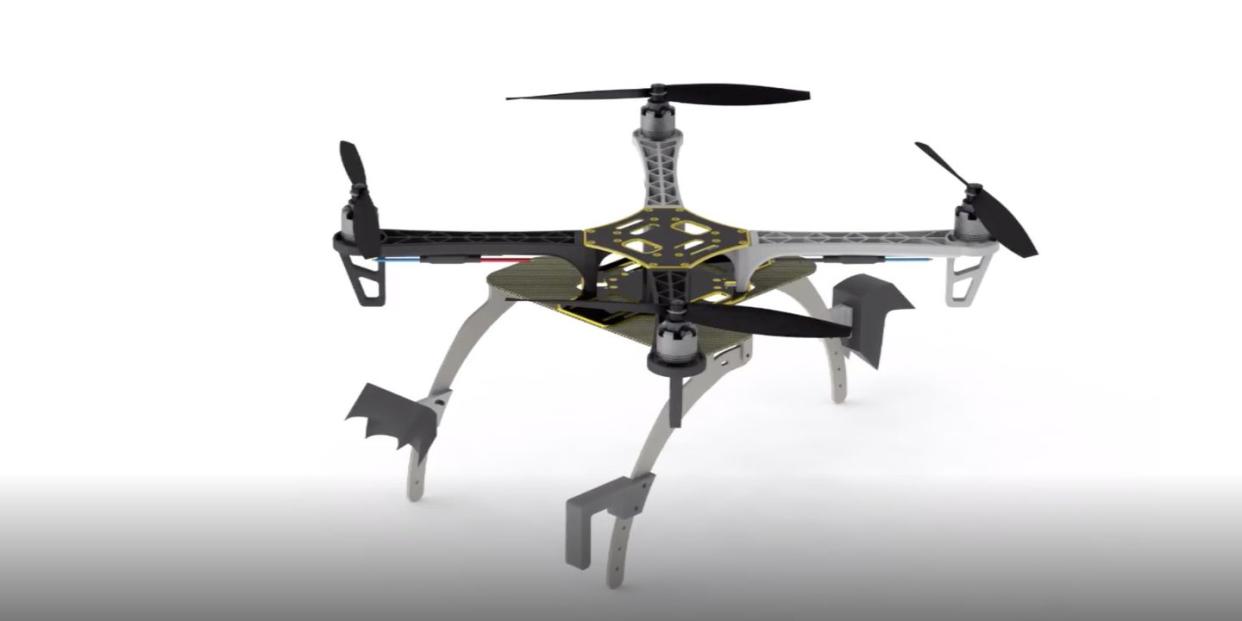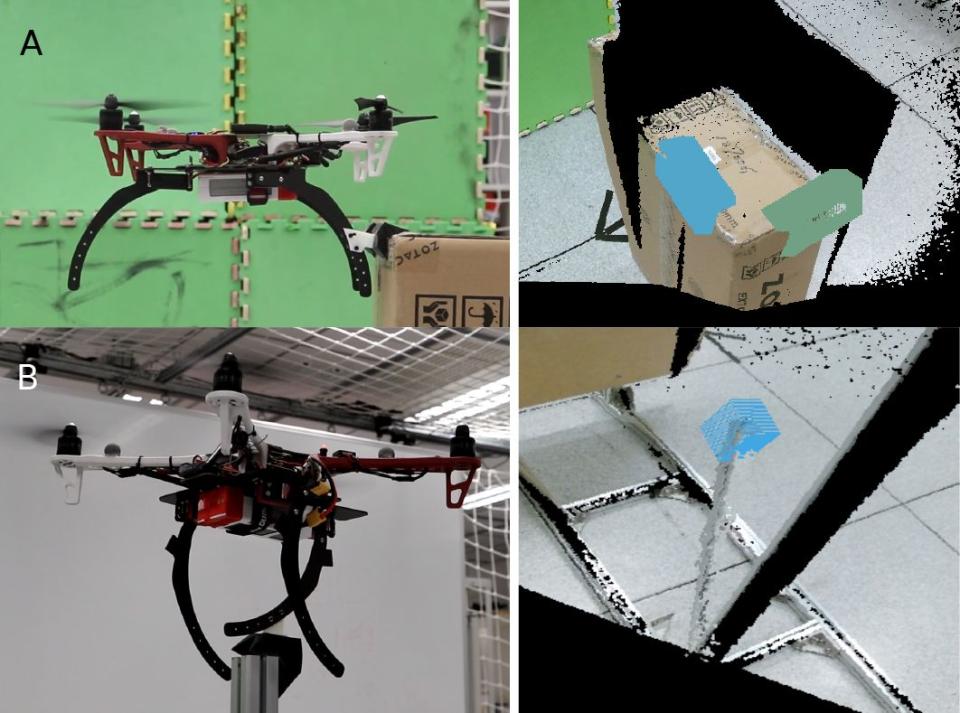With These New Feet-Like Landing Gear, Drones Could Grab on and Perch Like Birds or Bats

A drone needs a flat spot to land. That fact may sound simple and obvious, but it also limits their usefulness and where they can go. Now, though, Yale researchers inspired by the animal kingdom are figuring out ways that drones could perch like a bird or a bat.
"Birds can be observed placing their feet on some support while still flapping their wings and bats are known to hang upside down while grasping some suitable surface," says Kaiyu Hang, a postdoc at Yale. "In all of these cases, some suitably shaped part of the animal’s foot interacts with a structure in the environment and facilitates that they have to generate less lift or that power flight can be completely suspended."
In a study reported today in Science Robotics, Hang and colleagues designed and 3D printed bird-like legs for a drone, providing a simple, novel, cheap approach to letting uncrewed aerial vehicles (UAVs) perch. The simple workaround is efficient and would save energy in the long run, potentially allowing drones to transport more weight. Hang even says the legs could be built at home.
The design attempted to follow a few simple design rules. The leg system should be usable on flat surfaces as well as the curved surfaces it would perch on. It should be able to perch in such a way that it can scale to more than one kind of structure (i.e., grip to various sizes of light pole), its perching method should give it vertical lift support, and it should be easily mountable on most off-the-shelf UAVs while using as few actuators as possible. "This allows the user to design and replace parts of the landing gear without the need of reprogramming when working in different scenarios," Hang says.
Once Hang and his fellow researchers settled on a design, they put the legs through various tests, perching successfully on a variety of surfaces. The UAVs were able to partially or wholly power down without falling. Once powered up, they had an easier time taking back off again. Hang says this allows for lower energy consumption, have an easier time transporting heavier payloads, and allow things like taking hardware to workers without having to hover once there.

The next steps are to create more stability with smaller contact surfaces, like thinner tree branches. This will give the UAVs even more varied surfaces, and allow for better control over the landings themselves by giving them some compensation for tighter balancing.
So in the future, when you look up at a light pole, you may have to look for rotors instead of wings to figure out what you're looking at-and you may be looking at a new future for UAVs.
('You Might Also Like',)

